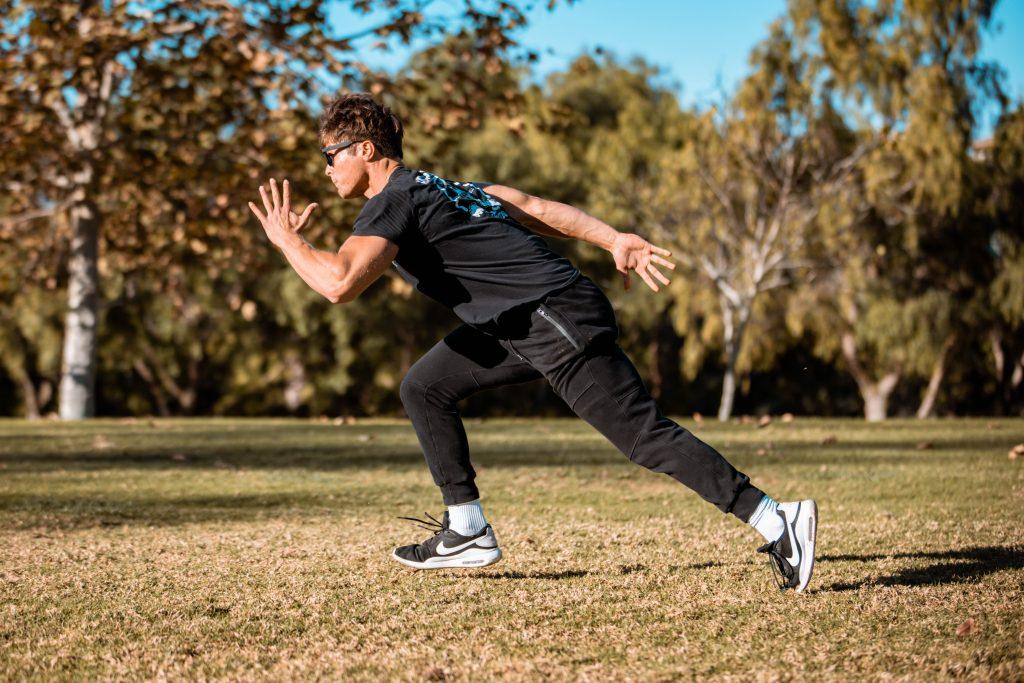When most people think of strength training, they think of lifting weights in the gym. It makes sense to need to build strength by literally using your muscles to pick up weight. But you can also build strength without weights, like sprinting. It is a form of strength training, even though it doesn’t involve lifting weights. Hence why sprinting is strength training in disguise.

How Sprinting is a Key Piece of Any Comprehensive Strength Training Program
In fact, sprinting is a key piece of any comprehensive strength training program because sprinting builds muscle. When you sprint, you’re using your muscles to generate force against the ground. This force helps to build muscle mass and strength.
In addition to building muscle, sprinting also helps to improve your power. Power is the ability to generate force quickly. This is an important quality for sprinters, as they need to be able to generate a lot of force in a short amount of time in order to reach top speeds.
Sprinting also helps to improve your coordination. Coordination is the ability to use your muscles together in a smooth and efficient way. This is important for sprinters, as they need to be able to coordinate their movements in order to run at top speeds.
Finally, sprinting helps to improve your running economy. Running economy is the amount of energy you use to run a certain distance. The better your running economy, the farther you can run without getting tired.
So, if you’re looking to improve your strength, power, coordination, and running economy, then sprinting is a great exercise for you. Here are some of the specific muscles that are used in sprinting:
- Quadriceps: The quadriceps are the large muscles on the front of your thighs. They help to extend your knees and straighten your legs.
- Hamstrings: The hamstrings are the large muscles on the back of your thighs. They help to flex your knees and bend your legs.
- Glutes: The glutes are the large muscles in your buttocks. They help to extend your hips and straighten your legs.
- Calves: The calves are the muscles on the back of your lower legs. They help to flex your ankles and point your toes.
- Core: The core muscles are the muscles that support your spine and pelvis. They help to stabilize your body during sprinting.
If you’re new to sprinting, it’s important to start slowly and gradually increase the intensity and duration of your workouts. It’s also important to warm up before sprinting and cool down afterward.
Sprinting Workout for Beginners
- Warm up for 5 minutes with light cardio, such as jogging or jumping jacks.
- Sprint for 30 seconds, followed by 30 seconds of rest. Repeat this 5 times.
- Cool down for 5 minutes with light cardio.
As you get stronger, you can increase the duration of your sprints and the number of repetitions. You can also add in other exercises, such as plyometrics, to improve your power and coordination.
Sprinting is a great way to improve your strength, power, coordination, and running economy. If you’re looking to get faster, then sprinting is a must-do exercise.
Here are some additional tips for getting the most out of your sprinting workouts:
- Focus on technique. Good sprinting technique is essential for avoiding injuries and maximizing your speed.
- Vary your workouts. Don’t just do the same sprints over and over again. Mix things up by adding in different distances, speeds, and inclines.
- Listen to your body. Don’t push yourself too hard, especially if you’re new to sprinting. Take breaks when you need them and rest when you’re sore.
With proper training and technique, sprinting can help you achieve your fitness goals. So get out there and start sprinting. Plus, a little pre workout is always nice to take before sprinting. Reach and exceed your personal best with POW Natural Pre-workout. Designed to work within minutes and keep you feeling strong, not shaky. It’s no surprise POW has a cult following of celebrities, trainers, athletes, nutritionists and health-conscious shoppers. Whether you are a novice or expert trainer, POW is safe and effective for all fitness levels.





